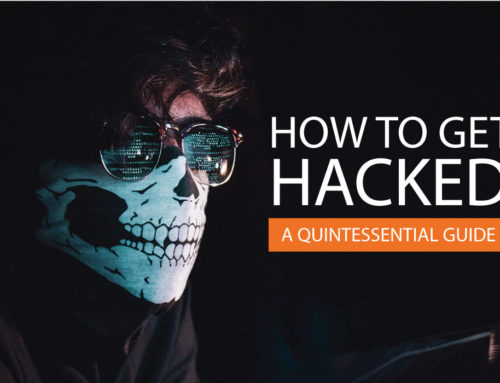In 2008, a surprising practical application of electronic currency came into use. This week, we look at what is now known as the Bitcoin; how it works and what it might mean to online economic development.
The Internet has grown, and commercialization has brought in worldwide participation. An open exchange of ideas and business models has inspired many to dream of a digital system to safely trade goods and services anywhere in the world. As early as 1998, ideas were being discussed for a cryptographic system of exchange without the interference of any government. Between 2007 and 2008, Satoshi Nakamoto developed the proof of concept for a cryptocurrency we call the Bitcoin. After the global financial crisis of 2008, interest in the Bitcoin grew among those wary of the existing international system of finance.
SOURCE: weidai.com, the Economist
Any unit of currency must satisfy a few specific requirements to function:
- It must be a store of value
- It must be an accepted medium of exchange
- It must be self verifying (not counterfeit)
- It must be accountable (not able to be double spent)
Traditional currencies in ancient history made use of mining precious metals to be stamped, struck, or otherwise cast to indicate value. The scarcity of metals like gold and silver made them good candidates for requirement #1: a store of value. They also resisted forces of nature that corroded (diminished) the value of the currency. Paper money, or fiat currency, has value as long as the backing entity (usually a Government) can guarantee that value. The financial crisis of 2008 threatened to undermine requirement #1 for the US Dollar.
The concept of mining for a Bitcoin, is accomplished through a series of mathematical puzzle solving processes. Each puzzle successfully solved is verified by other computers and thus “earns” a value denominated in Bitcoin units. The Economist magazine does a good job of describing this process. Through this “mining” process, a system of incentives has been established and thousands of people worldwide have voluntarily agreed to participate in creating the “reserves” needed to create enough Bitcoin to use to satisfy requirement #2: an acceptable medium of exchange.
SOURCE: the Economist
There is a rather famous Papa John’s pizza purchase that was made 5 years ago using Bitcoin. The significance of the two ordinary pizzas points to requirement #2: acceptable medium of exchange. Amusingly, the purchase using the digital currency was more a statement of being cool than a groundbreaking step away from traditional currency purchasing. However it played out then, May 22nd is now known among young people as “Bitcoin Pizza Day”, complete with specials, discounts, and promotions.
Note: At 10,000 Bitcoin, those pizzas would cost USD $6.59 million at today’s (mid 2016) exchange rate. At the 2010 exchange rate, they were worth USD $25.
Source: Coin Desk
In the old days, mining precious metals provided the basis for minting traditional currency. The process of “mining” for Bitcoin is now a mathematical process that relies on a peer to peer (P2P) network of linked servers to solve problems. Part of this model includes processing transactions of Bitcoin purchases and generating a chain in blocks that are added in a ledger kept on the P2P network. Copies of these ledgers are kept around the world insuring redundancy and making it practically impossible to tamper with. This process satisfies requirement #4: not able to be double spent. By generating the “blockchain” of ledger entries, each Bitcoin is accountable during a purchase and only spent once per transaction.
A Bitcoin is referred to as a “crypto-currency” because it makes use of an cryptographic hash SHA256 algorithm. This is considered very strong and practically impossible to reverse engineer. Why is this important? Requirement #3: self verification, is better known as being resistant to counterfeiting. In the days of the American west, when common folk would trade gold coins for purchase, a way to “self verify” was to bite on the gold coin. If it dented to the satisfaction of the one considering the coin, it was considered authentic. Today, the bite has been replaced by mathematical authentication.
SOURCE: Stack Overflow
We’ve covered the 4 requirements for a currency, but the very first, being a store of value, has more. The concept of valuation is very abstract in nature, and depends in large part on convincing enough people to believe value exists. The stock market is a good example of this in our traditional economies. Traders gather in an exchange to make deals buying and selling. This process lets economic forces determine price and has the oversight of Government regulation. The the US, the Securities and Exchange Commission provides that oversight with the force of law to insure trading remains fair and that trust will remain in the marketplace. Bitcoin gained it’s own exchange in 2010. It lasted for 4 years before collapse.
The exchange that became dominant in Bitcoin trading was known as Mt. Gox. Established by Jed McCaleb in California, Mt. Gox grew to account for 80% of global Bitcoin trading by 2013. The price fluctuations that occurred now serve as teaching points to students of economics. Value, as stated before, depends on convincing enough people to believe on an agreed price. In early 2013, the value of a Bitcoin was USD $23. By November of that year, the Wall Street Journal reported the price had risen to $1242. There were other exchanges at the time,but with 80% of the trading being done at Mt. Gox, the value that mattered was the high price. People believed in that value.
SOURCE: Wired Magazine
The US Treasury Department had been watching the development of the Bitcoin since it began. The Financial Crimes Enforcement Network pressured companies that traded in Bitcoin to register with them in order to provide oversight in the US. The rationale was that criminal activity would be increasingly funded through Bitcoin networks that are decentralized and outside the control of the banking systems. Accounts were frozen and seized by US Government agencies throughout 2013 as investigations were launched into how Bitcoin transactions from Mt. Gox were being used. The exchange registered with the US Treasury in June of 2013 in an attempt to cooperate and maintain credibility as an exchange and public trust.
Black market trading sites like the Silk Road began operating in the Deep Web, in an attempt to allow traders to be anonymous and operate outside the control of Governments. Payment for the goods and services traded was made only in Bitcoin, with rates of exchange based on quotes primarily from Mt. Gox. Trouble was brewing for both the market and the exchange as the valuation increased. Criminal involvement brought the weight of the US Justice Department into repeated investigations against the Silk Road and Mt.Gox.
We have previously covered 4 requirements for a digital currency: A store of value; An accepted medium of exchange; Self verifying (not counterfeit); Accountability (not able to be double spent).
Requirements #3 and #4 have the unique benefit of being mostly technical and resistant to outside interference. Requirements #1 and #2, however, are less technical and more qualitative. When the exchange Mt. Gox was forced to cease operations, the Bitcoin value in competing exchanges like Bitstamp and CoinDesk fell dramatically. Both the rise and fall in value exposed one of the biggest weaknesses in Bitcoin. Public trust.
SOURCE: Bitcoin Market Price
Economics professors will often reference a story of the Amsterdam Tulip market in the 1630s to help explain irrational price increases. The Bitcoin story has many similarities. Back in the 17th century, after years of war in Europe, money flowed back into the Dutch economy. With more disposable income, people took an interest in the flower from Asia. They bought them by the bulb, and a market for them grew outside of the official exchanges of the Dutch government. Prices rose to the point that by 1637, rare tulip bulbs were bringing a price equivalent to entire homes. Regular tulip bulbs also traded at unusually high prices. This attracted the attention of Dutch government officials. They made changes to try to “cash out” on contracts for tulip bulbs.
SOURCE: the Economist
Since the trading in tulip bulbs largely took place outside the Amsterdam stock exchange (a Government regulated trading exchange), contracts for tulip bulbs had nothing to insure they were honored. People walked away from contracts by agreeing to pay a small fine. There was not any legal action to be taken. The number of investors was small, relative to the traditional economy, but the losses were significant. The public trust in the tulip market collapsed and the prices fell dramatically. Much like the Mt. Gox exchange collapse of 2014, the losses in the tulip collapse were minimized to a small segment of the economy.
If public trust was lost as a result of the collapse of Mt.Gox, and the US Government’s actions against the Silk Road managers, one might ask how the cryptocurrency has managed to remain in use? The answer is perhaps the strongest evidence that changes are continuing to shape the way the world trades. While the value of Bitcoin fell, it did not become obsolete. Investment into the infrastructure behind Bitcoin was significant by 2013. Serious, legitimate business developers want to see this concept succeed. The drive to create a system free from the politics and power games of the developed world is strong. The enduring Bitcoin exchanges are evidence of this commitment to independence.
Most of the discussion this far has been from the perspective of the developed world. Economies of industrialized societies have efficient, functioning markets and tend to be less costly per transaction. The fees that are incurred represent the cost of various protections in place to prevent fraud. Third world economies often have none of those protections. Corrupt Governments often try to impose high cost restrictions and controls on the movement of money. The introduction of mobile phones and mobile technology has allowed many impoverished people a way to receive financial services that would never come through their national banks or Government agencies. A digital currency that exists on a decentralized network and outside the control of corrupt officials greatly improves the value per transaction.
Mobile technology and digital currency has helped developing nations like Kenya deal with political violence and instability while generally increasing rural incomes by as much as 30%. The M-Pesa mobile payment system has been remarkably successful in developing nations and has been exanded outside the African economy to regions like Afghanistan and India. M-Pesa may not deal in Bitcoin, but the technology is similar and could easily process transaction in Bitcoin.
SOURCE: STRATFOR, the Economist
ABOUT THE AUTHOR
Christoper Watson is an Information Technology professional with success in both public and private sector businesses. Technical and business experience is complimented with operational and strategic planning, international contracting work, leadership development and team building competency in challenging physical and political environments. Experience leverages strengths with technology services and providing timely and relevant information to senior executive leadership. Christopher is based out of the Oklahoma City office.






Leave A Comment